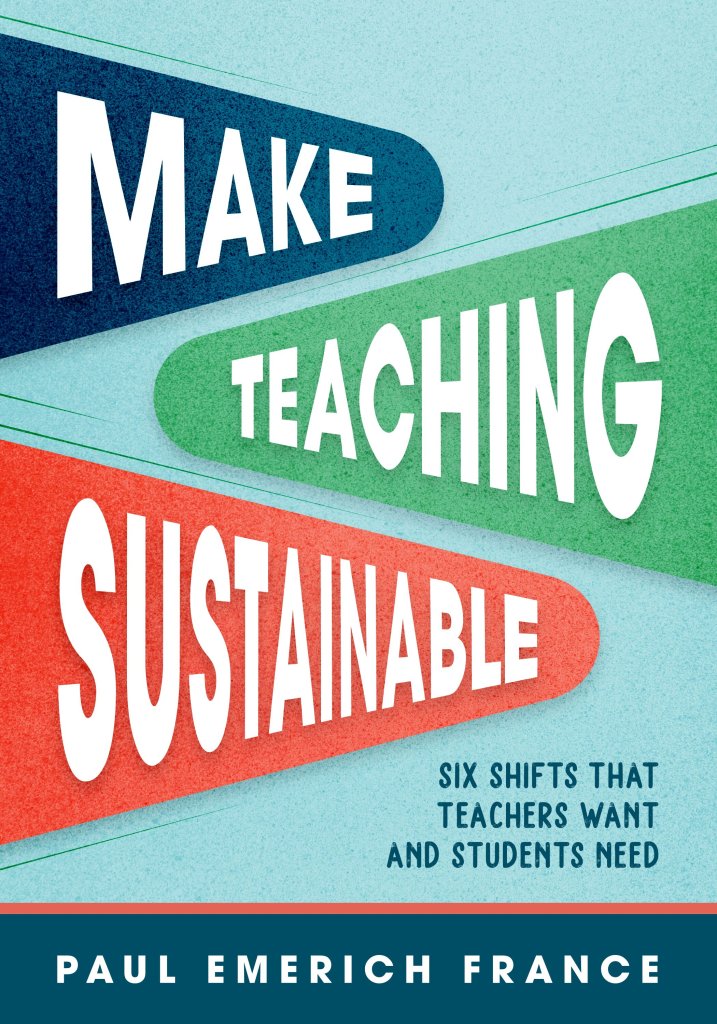A Minimalist Approach to Instructional Design
Instead of insisting that more is better, a sustainable approach to curriculum planning embraces doing less, but better.
Your content has been saved!
Go to My Saved Content.In Summer 2014, I set my sights on San Francisco, looking for acceptance as an openly queer educator. I found it as an elementary school teacher in Silicon Valley, working for an emerging educational technology company and network of microschools dedicated to personalized learning.
Our theory for personalization was simple: if every child had an individualized “playlist” of activities, then we could personalize learning at scale and close gaps in achievement. At the outset, it seemed intuitive: the more individualized the curriculum was, the more personalized it would be. Implementation, however, was not quite as simple, and I learned that overindividualizing curriculum has unsustainable consequences (France, 2022).
This approach to personalization fails to create conditions for empowerment. Focusing on fruitful learning, not completing playlist activities, is what builds transferable skills and learner agency. The approach was also overly individualistic. Giving every child their own playlist—so that all students are working on different activities—takes away opportunities for learners to connect with each other. And overindividualizing learning is inequitable, creating access and opportunity gaps and providing some learners content at higher levels than others. Ultimately our efforts produced an industrialized, disempowering, individualistic paradigm, with students on the receiving end of granulated instructional materials, ground into bits and pieces in the form of playlist cards.
Creating, monitoring, and assessing individualized learning plans—even in a class of fewer than 20 students—creates an excess of data and a great deal of work, without proportional return on the teacher’s time investment. To be constantly running around a classroom putting out fires, clarifying misconceptions, and helping learners is physically, emotionally, and cognitively draining.
Maximalism Is Unsustainable
Overpersonalizing learning is maximalist in nature—too much individualization requires an excess of planning from teachers and produces an excess of data to analyze and act on, both of which lead to burnout. Why is it that educators often believe more is more? Could doing less, perhaps, actually achieve more?

American culture is often defined by excess, and this way of thinking has infiltrated our classrooms. This broader desire for “more” has played an instrumental role in the world’s climate crisis, accelerating the extraction and exploitation of natural resources. It is also a culprit in education’s climate crisis, unsustainably extracting and exploiting teachers’ energy reserves. Maximalism has conditioned educators to believe that the more activities, choices, and data they have—and the faster they accelerate both the consumption of these materials and learning itself—the richer learning will be. But this cannot be true if the methodologies for designing learning experiences burn teachers out and saturate learners.
Maximalism manifests in classrooms in other ways, too, for instance, when we leverage worksheet- and workbook-based pedagogies. After all, the more work students complete, the more learning is happening, right? And the more technology teachers use, the more progressive and cutting-edge they are, right? We should know better, but it’s tempting to fall into these traps. In addition, some teachers tend to believe that there is a direct correlation between the amount of time they spend on their jobs and the quality of their teaching, when the reality is quite the contrary.
It is tempting to succumb to the idea that there will never be enough time in the day. “Teaching is just hard,” some will say. “This is what you signed up for.” But when will we draw the line? When will we decide that enough is enough and become advocates for teachers to have more sustainable workloads? Until we make the courageous choice that it is, in fact, possible for teachers’ workloads to be reduced without negatively affecting student learning, we are resigning ourselves to an unproductive and maximalist mindset that will continue to burn teachers out.
One in three respondents in the #SustainableTeaching survey identified time as a factor influencing the unsustainability of teaching. Most commonly, respondents described a lack of planning time; others stressed that the sheer number of responsibilities teachers have cannot be accomplished within the confines of an eight-hour workday. A middle school English language arts teacher from Iowa recounted: “I can’t recall a year in which something new wasn’t added to my plate. Nothing is taken off. We constantly have to balance what gets priority at any given moment of our day. I typically work until 5:00 p.m.—two and a half hours after contract—to grade papers, input grades, plan, and make parent contacts, and usually have an additional one to two hours of work to do after my children are in bed. This is unsustainable.”
Enacting Minimalism for Simpler Instructional Design
To embrace minimalism in teaching, begin by reiterating this idea: It’s not best practice if it’s not sustainable. This means finding practices that lead to rich learning experiences while keeping curriculum design manageable within a reasonable workweek. Planning as many activities as there are learners in the classroom simply is not sustainable: it cannot be kept up over the course of an entire school year, even if it will theoretically meet all learners where they are. Even planning multiple activities for leveled groups poses challenges for teachers in terms of sustainability. Although classrooms should be engineered with options, this does not necessarily entail planning two to three different lessons for different groups of students over the course of a single learning block.
A minimalist mindset toward designing learning experiences encourages efficiency by cutting out practices that benefit neither teachers nor students and amplifying practices that are mutually beneficial. Educators can simplify instructional design by being intentional with learning design and taking an embodied approach, as opposed to the disembodied approach that breaks the curriculum down into pieces and industrializes it.
Intentional: In my first years of teaching, I operated without intent, caught in the cycle of assigning, completing, collecting, grading, and returning an excess of meaningless work to students. In addition to this routine reflecting a product-focused mindset toward assessment—which we will explore in the next chapter—it was also maximalist. I had been conditioned to believe that the more activities I had to assess, the more data I would have, and the more feedback kids would get. But the reality is that this excess of activities did not make the learning richer or me a better teacher—it just meant I was working more.
Allysun Sokolowski is an elementary and middle school teacher in Bethesda, Maryland. In our interview for the #SustainableTeaching project, she shared the importance of setting boundaries around workload, describing how she tracks her time: “I know that if I hit 55 hours a week, I have to stop. I have learned that 55 hours a week is my breaking point. And I can do it once or twice. But after that I get angry and resentful, and I hate what I’m doing.”
Allysun stressed that 55 hours might not be a universal number. For another teacher, “it might be 45—or... 65 or whatever. You know, it’s just a part of... that kind of self-feedback.”
Setting personal boundaries is essential to finding sustainability—and it is one of the things teachers can control in their classrooms. Setting boundaries around time and tasks helps teachers identify and reflect on which responsibilities are essential and which activities or processes create more work without a proportional return on investment. This in turn enables them to be more intentional about planning and preparing to teach.
Being intentional benefits both learners and teachers. When teachers are intentional, they provide activities that promote inquiry, deepen learning, and engage students in rigorous, independent thinking. These same activities are worth reviewing and assessing, and they provide relevant data to inform instruction.
Embodied: Approximately 10 percent of teachers in the #SustainableTeaching survey referred to “initiative fatigue.” Not only were there too many initiatives in any given year, but the drive behind the initiatives seemed quick to burn out. Then in succeeding years there would be new sets of initiatives, compounding the unsustainability of previous years’ initiatives.
“You never really get time to hone your craft,” a preschool teacher from New York shared, “because by the time you do, it’s over.” A kindergarten teacher from Seattle echoed this sentiment: “None of the curriculum adoptions last for more than a few years, making it impossible to build a craft.... Also, none of the curricula across subjects speak together or enhance each other, which is such a waste of energy and time.”
When approaches to curriculum, assessment, instruction, and professional learning are maximalist, there are too many initiatives (often independent of one another) circulating. These circumstances make it difficult for teachers to have time to develop a sense of competence or mastery in any of them, all the while aware that the initiatives they are to follow could change at the drop of a hat.
The maximalist approach affects students, too. When there are too many skills to master, kids become overwhelmed. They cannot keep track of that many skills, and the feeling of being swamped can cause them to disengage and misunderstand the inherent value of what they are learning.
An intentional and embodied approach to district- or school-wide initiatives means streamlining initiatives, creating connections between some and getting rid of nonessential ones. Instructional design benefits from an embodied approach, too, streamlining teachers’ work and reducing the amount of time spent planning. This in turn creates space and time for teachers to distribute and use their energy reserves for essential parts of their jobs. It also creates space for learners to make transferable and sustainable connections between new skills, lessons, and academic subjects—lessening the need for teachers to review and reteach already explored concepts. An embodied approach to curriculum allows various programs to “speak together,” as the teacher from Seattle characterized it, adding to sustainability efforts.
Principles of Minimalist Instructional Design
Minimalist instructional design requires establishing systems and structures in the classroom that help create more possibilities for learning while minimizing the work that keeps teachers from what really matters: building humanizing relationships with learners and helping every child grow. When systems and structures are sustainable, they allow teachers to be mindful and present in the most human components of teaching.
To design instruction with minimalism in mind, consider the following guiding principles:
• Use backward design (Wiggins & McTighe, 2005) for long-term planning.
• Look for connections between standards to teach multiple skills at once.
• Maintain minimalist documentation practices, such as journaling and portfolios.
• Choose deindustrialized, versatile, and rich learning tasks.
• Universally design learning tasks and the learning environment.
• Become an edtech minimalist.
From Make Teaching Sustainable: Six Shifts That Teachers Want and Students Need (pp. 71–76) by Paul Emerich France, Arlington, VA: ASCD. Copyright © 2023 by Paul Emerich France. All rights reserved.
